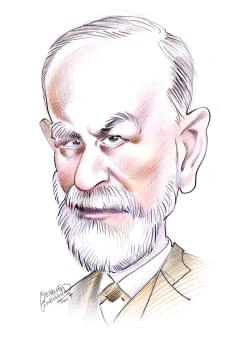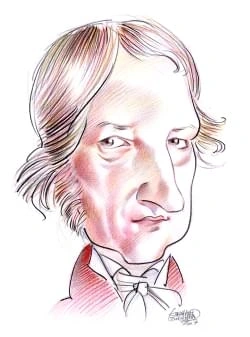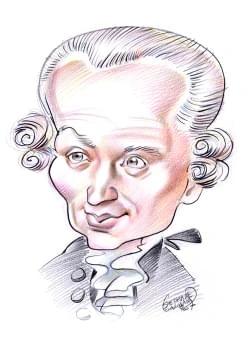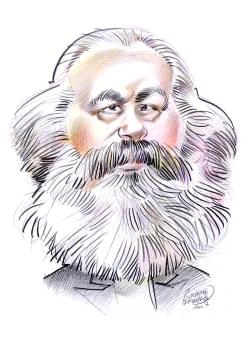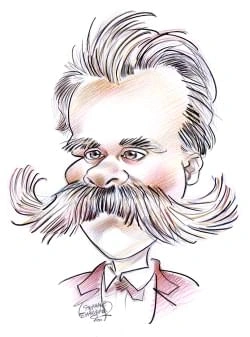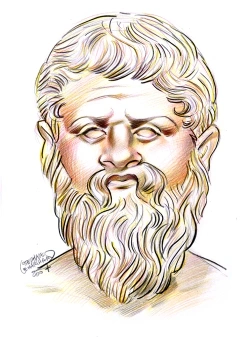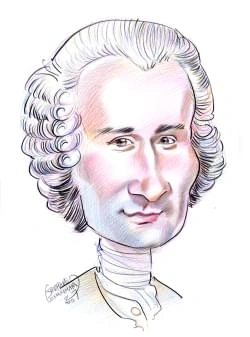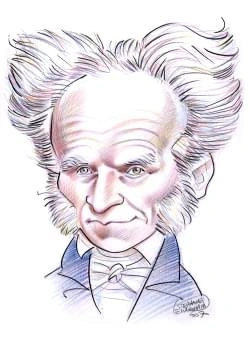742 résultats pour "distincts"
-
United States (Overview) - country.
parts. IV UNITED STATES PEOPLE When Europeans first reached North America in the 1520s, they encountered other people—Native Americans—and they also encountered a new geography. Someimagined they were entering “a howling wilderness”—an environment filled with exotic flora and fauna but sparsely populated. In reality, they found their way to alandmass that was widely settled. But soon after the Europeans’ arrival, the population of the Americas plummeted, largely because Native Americans lacked...
-
Frog (animal).
which means that their body temperature depends on the temperature of the surrounding environment. Few species can tolerate temperatures below 4°C (40°F) orabove 40°C (104°F), and many species can survive only within a narrower range of temperatures. In addition, frogs’ thin, moist skin offers little protection againstwater loss, and when on land the animals must guard against drying out. Many frogs are active at night because temperatures are cooler and humidity is higher thanduring the day. In...
-
Frog (animal) - biology.
which means that their body temperature depends on the temperature of the surrounding environment. Few species can tolerate temperatures below 4°C (40°F) orabove 40°C (104°F), and many species can survive only within a narrower range of temperatures. In addition, frogs’ thin, moist skin offers little protection againstwater loss, and when on land the animals must guard against drying out. Many frogs are active at night because temperatures are cooler and humidity is higher thanduring the day. In...
-
Volcano.
before eruption. Very violent explosive eruptions are called Plinian eruptions, after Roman naturalist Pliny the Elder. These eruptions can last for several hours to daysand eject a large amount of pyroclastic material. Some volcanoes can produce much more energetic eruptions that eject materials farther from the vents because oftheir andesitic and dacitic composition. Andesitic and dacitic lava is generally thicker than basaltic lava. Stiff lava generally produces more-explosive eruptions. B No...
-
Pablo Picasso.
Color juxtapositions—between blue and orange, for instance—are intentionally strident and unharmonious. The representation of space is fragmented and discontinuous. While the left side of the canvas is largely Iberian-influenced, the right side is inspired by African masks, especially in its striped patterns and oval forms. Suchborrowings, which led to great simplification, distortion, and visual incongruities, were considered extremely daring in 1907. The head of the figure at the bottom right,...
-
Tree - biology.
The major parts of a tree are its roots, trunk, leaves, flowers, and seeds. These components play vital roles in a tree’s growth, development, and reproduction. A Roots Trees are held in place by anchoring organs called roots. In addition to anchoring the tree, roots also absorb water and minerals through tiny structures called roothairs. From the roots the water and mineral nutrients are carried upward through the wood cells to the leaves. Although the internal structure of most kinds of roots...
-
Anthologie philosophique: DESCARTES
58 1 DESCARTES : «JE PENSE DONC JE SUIS » paisible solitude, je m'appliquerai sérieusement et avec liberté à détruire généralement toutes mes anciennes opi nions. Or il ne sera pas nécessaire, pour arriver à ce des sein, de prouver qu'elles sont toutes fausses, de quoi peut être je ne viendrais jamais à bout; mais, d'autant que la raison me persuade déjà que je ne dois pas moins soi gneusement m'empêcher de donner créance aux choses qui ne so...
-
Tiger - biology.
have a simple digestive system designed to process meat so that the nutrients can be readily absorbed into the bloodstream. With the exception of white tigers, which have blue eyes, all tigers have yellow eyes. Tigers mainly use vision to find prey. Although tigers see about as well as humansduring the day, their large eye openings gather more light than do human eyes, making tiger night vision far superior to that of humans. In addition, a special structurein the tiger’s eye, called the tapetu...
-
-
Shark - biology.
Sharks have two-chambered hearts that are relatively small compared to the rest of their bodies. Blood flows from the heart to the gills, where it collects oxygen fromwater and then distributes it to the other organs and tissues. The small heart produces weak blood pressure, and many sharks must swim continuously to create themuscular contractions needed to circulate blood throughout their bodies. Most sharks are cold-blooded—that is, they do not generate heat by digesting food. Instead, the bod...
-
Human Evolution.
Strepsirhines are the most primitive types of living primates. The last common ancestors of strepsirhines and other mammals—creatures similar to tree shrews andclassified as Plesiadapiformes—evolved at least 65 million years ago. The earliest primates evolved by about 55 million years ago, and fossil species similar to lemursevolved during the Eocene Epoch (about 55 million to 38 million years ago). Strepsirhines share all of the basic characteristics of primates, although their brains are notpa...
-
Human Evolution - biology.
classified as Plesiadapiformes—evolved at least 65 million years ago. The earliest primates evolved by about 55 million years ago, and fossil species similar to lemursevolved during the Eocene Epoch (about 55 million to 38 million years ago). Strepsirhines share all of the basic characteristics of primates, although their brains are notparticularly large or complex and they have a more elaborate and sensitive olfactory system (sense of smell) than do other primates. B Haplorhines B1 Tarsiers T...
- th des graphe
-
Estonia - country.
protest the expansion of open-pit phosphorite mining in northeastern Estonia. Their success in stopping the expansion prompted further demonstrations as part of thecountry’s independence movement. Since independence Estonia has taken measures to protect the environment. The government has ratified international agreementsto reduce emissions of hazardous wastes and greenhouse gases, as well as to protect biodiversity, wetlands, and endangered species. Estonians cherish thecountryside, and 31 perc...
-
Yemen - country.
port. Al Ḩudaydah (155,110), in the Tih āmah, is the second largest port. Ta‘izz, (178,043), in the highlands above Aden, is an important commercial and light industrialcenter. Among Yemen’s larger towns are Şa‘dah, far to the north; Dham ār, Yarim, and Ibb, in the middle region; Al Mukall ā, on the southern coast; and in Hadhramaut,the towns of Shib ām, Say‘ ūn, and Tar īm. C Language Nearly all Yemenis speak Arabic. However, the country’s extremely rugged terrain, widely separated population...
-
Georgia (country) - country.
1917. During the subsequent Soviet period, religious practice was strongly discouraged because the Soviet state was officially atheistic; however, the GeorgianOrthodox Church was allowed to function openly. Orthodox Christianity is the religion of about 58 percent of the Georgian population. Muslims represent about 19 percent of the country’s population, with ethnicAzerbaijanis, Kurds, and Ajars comprising the principal Muslim groups. Ajars are ethnic Georgians who converted to Islam in the 17th...
- 861 SUJETS-TEXTES DE L’ÉPREUVE DE PHILOSOPHIE AU BACCALAURÉAT
-
-
Bangladesh - country.
F Environmental Issues Waterborne diseases such as cholera are a serious threat to public health in Bangladesh. Until the 1970s, many of Bangladesh’s people became sick from drinkingpolluted water drawn from surface rivers. Aid agencies such as the United Nations Children’s Fund (UNICEF) built shallow wells throughout the country to help provide asafe source of drinking water to Bangladesh’s poor. In the 1990s, however, it was discovered that many of these wells were contaminated by arsenic, a...
-
Adolf Hitler
I
INTRODUCTION
Adolf Hitler (1889-1945), German political and military leader and one of the 20th century's most powerful dictators.
A Economic Collapse At the end of World War I, the Allies (those countries who had fought against Germany) had demanded that Germany pay reparations—that is, payments for wardamages. The government refused to pay all that was demanded by the Allies. When Germany failed to pay enough, France and Belgium occupied the coal mines in theRuhr industrial area in west central Germany in January 1923. In protest, the German government halted all reparation payments and called for passive resistance by a...
-
Adolf Hitler.
A Economic Collapse At the end of World War I, the Allies (those countries who had fought against Germany) had demanded that Germany pay reparations—that is, payments for wardamages. The government refused to pay all that was demanded by the Allies. When Germany failed to pay enough, France and Belgium occupied the coal mines in theRuhr industrial area in west central Germany in January 1923. In protest, the German government halted all reparation payments and called for passive resistance by a...
-
Adolf Hitler .
A Economic Collapse At the end of World War I, the Allies (those countries who had fought against Germany) had demanded that Germany pay reparations—that is, payments for wardamages. The government refused to pay all that was demanded by the Allies. When Germany failed to pay enough, France and Belgium occupied the coal mines in theRuhr industrial area in west central Germany in January 1923. In protest, the German government halted all reparation payments and called for passive resistance by a...
-
Vermont - geography.
Forests cover 78 percent of Vermont. Most of the trees are deciduous, principally the maple, elm, birch, beech, oak, hickory, ash, cherry, and butternut. The state treeis the sugar maple, which provides Vermont’s famous maple syrup. Conifers are common in some mountain areas and include mainly the white pine, red spruce,hemlock, and cedar. A great variety of ferns have been found within the state. Among the more common wildflowers that grow in Vermont are anemones, arbutuses,violets, lilacs, dai...
-
Vermont - USA History.
Forests cover 78 percent of Vermont. Most of the trees are deciduous, principally the maple, elm, birch, beech, oak, hickory, ash, cherry, and butternut. The state treeis the sugar maple, which provides Vermont’s famous maple syrup. Conifers are common in some mountain areas and include mainly the white pine, red spruce,hemlock, and cedar. A great variety of ferns have been found within the state. Among the more common wildflowers that grow in Vermont are anemones, arbutuses,violets, lilacs, dai...
-
Uganda - country.
Uganda’s population is predominantly rural and is concentrated in the south, particularly in the crescent at the edge of Lake Victoria and in the southwest. Almost allUgandans are black Africans. Foreign residents make up less than 4 percent of the population and come mostly from neighboring states. In 2008 Uganda’s population was estimated at 31,367,972. The estimated growth rate of the population in 2008 was 3.6 percent. The birth rate was 48 per 1,000people and the death rate 12 per 1,000. Th...
- Cours de droit Constitutionnel
-
-
History of Colonial America - U.
Despite the lack of settlement, New France prospered as a vast fur-trading enterprise. French explorers traveled deep into the North American continent seeking newsupplies of deerskins and beaver pelts. In 1673 French missionary Jacques Marquette reached the Mississippi River in present-day Wisconsin. In 1681 explorer René-Robert Cavelier, Sieur de La Salle, traveled down the majestic Mississippi to the Gulf of Mexico. He honored the reign of King Louis XIV (1643-1715) by creating the newcolony...
-
DROIT ADMINISTRATIF - cours complet
Droit administratif DROIT ADMINISTRATIF Dictionnaire de droit administratif (Van Lang); GAJA (Long-Weil-Brabant) I. L'organisation administrative (acteurs et relation) → actions de l'administration II. Actes et actions administratives III. Citoyenneté administrative → réaction des administrés Introduction Définition : droit administratif : pas le droit de l'administration. Administare = servir, pour le service de l'administré. Sens organique : Administration est un organe, une...
-
Antarctica - Geography.
The maximum area of sea ice surrounding Antarctica each winter varies from year to year. A marked decline during the 1970s appears to have reversed in more recentdecades, except in the Antarctic Peninsula area. This area has lost almost 40 percent of its sea ice since the start of the 1980s. Sea ice is important to marine life. Krillfeed on algae that live under the sea ice and are released when the ice melts in spring and summer. In turn, many marine animals feed on krill. Emperor penguinsbreed...
-
Washington (state) - geography.
The crest of the Cascade Range divides Washington into two distinct climatic regions. The area west of the Cascades, which is exposed throughout the year to rain-bearing winds from the Pacific Ocean, has a temperate marine type of climate that is characterized by mild wet winters and cool summers. The Cascades prevent themoist air blowing in from the Pacific from reaching eastern Washington. The Rocky Mountains on the eastern border also represent a climatic barrier. As a result, thesevere winte...
-
Washington (state) - USA History.
The crest of the Cascade Range divides Washington into two distinct climatic regions. The area west of the Cascades, which is exposed throughout the year to rain-bearing winds from the Pacific Ocean, has a temperate marine type of climate that is characterized by mild wet winters and cool summers. The Cascades prevent themoist air blowing in from the Pacific from reaching eastern Washington. The Rocky Mountains on the eastern border also represent a climatic barrier. As a result, thesevere winte...
-
Virginia (state) - geography.
C Coastline Virginia’s coastline, for both the mainland and the Eastern Shore counties, is 180 km (112 mi) long. The state’s tidal shoreline measures 5,335 km (3,315 mi), includingall bays, inlets, tidal estuaries, and other indentations. Major indentations include Chesapeake Bay; Hampton Roads, the excellent natural harbor on which are locatedNewport News, Norfolk, and Portsmouth; and the wide tidal estuaries of the lower Potomac, James, Rappahannock, and York rivers. Cape Henry, in the southe...
-
Virginia (state) - USA History.
C Coastline Virginia’s coastline, for both the mainland and the Eastern Shore counties, is 180 km (112 mi) long. The state’s tidal shoreline measures 5,335 km (3,315 mi), includingall bays, inlets, tidal estuaries, and other indentations. Major indentations include Chesapeake Bay; Hampton Roads, the excellent natural harbor on which are locatedNewport News, Norfolk, and Portsmouth; and the wide tidal estuaries of the lower Potomac, James, Rappahannock, and York rivers. Cape Henry, in the southe...
-
Vietnam - country.
E Natural Resources Vietnam’s most valuable natural resource is its land, particularly the fertile, alluvial soils in the Red and Mekong deltas. Some 29 percent of the land is currently beingcultivated. Vietnam has some valuable mineral resources, including gold, iron, tin, zinc, phosphate, chromite, apatite, and anthracite coal. Most deposits are located in the northernpart of the country. Few attempts were made to extract these minerals until the French takeover of Vietnam at the end of the 1...
-
-
Kentucky - geography.
The climate of Kentucky is characterized by warm or hot summers and cool winters. Throughout the year, temperatures do not vary greatly from place to place,although they are generally slightly lower in the Appalachian Plateaus region than elsewhere in the state. Average July temperatures are usually from 24° to 27°C (76°to 80°F) in the central and western areas and from 23° to 24°C (74° to 76°F) in the east. January averages range from below 1°C (34°F) in the northern Bluegrassregion to more tha...
-
Kentucky - USA History.
The climate of Kentucky is characterized by warm or hot summers and cool winters. Throughout the year, temperatures do not vary greatly from place to place,although they are generally slightly lower in the Appalachian Plateaus region than elsewhere in the state. Average July temperatures are usually from 24° to 27°C (76°to 80°F) in the central and western areas and from 23° to 24°C (74° to 76°F) in the east. January averages range from below 1°C (34°F) in the northern Bluegrassregion to more tha...
-
Genetics - biology.
construct identical buildings. Just as each contractor would require a full copy of the blueprint to construct a complete building, each new cell needs a complete copy ofan organism’s genetic information to function properly. Organisms use two types of cell division to ensure that DNA is passed down from cell to cell during reproduction. Simple one-celled organisms and other organisms thatreproduce asexually—that is, without the joining of cells from two different organisms—reproduce by a proces...
-
Pennsylvania - geography.
B Rivers and Lakes There are three major river basins in Pennsylvania: the Susquehanna, the Ohio, and the Delaware. Together they drain more than 90 percent of Pennsylvania’s landarea. Most of eastern and central Pennsylvania is drained by the Susquehanna and Delaware systems. The western part of the state is drained by the Allegheny andMonongahela rivers, which join at Pittsburgh to form the Ohio. In addition to the three major river basins, short streams flowing into Lake Erie drain the north...
-
Pennsylvania - USA History.
B Rivers and Lakes There are three major river basins in Pennsylvania: the Susquehanna, the Ohio, and the Delaware. Together they drain more than 90 percent of Pennsylvania’s landarea. Most of eastern and central Pennsylvania is drained by the Susquehanna and Delaware systems. The western part of the state is drained by the Allegheny andMonongahela rivers, which join at Pittsburgh to form the Ohio. In addition to the three major river basins, short streams flowing into Lake Erie drain the north...
-
Brazil - country.
occasional droughts. Brazil contains a wealth of mineral and plant resources that have not yet been fully explored. It possesses some of the world’s largest deposits of iron ore and containsrich deposits of many other minerals, including gold and copper. Brazil’s fossil fuel resources are modest, but this limitation is offset by the considerable hydroelectricpotential of the nation’s many rivers. Although Brazil is an important producer of tropical crops, areas of highly fertile land are limited...
-
Cuba - country.
Only two land mammals, the hutia, or cane rat, and the solenodon, a rare insectivore that resembles a rat, are known to be indigenous. The island has numerous batsand nearly 300 kinds of birds, including vultures, wild turkeys, quail, finches, gulls, macaws, parakeets, and hummingbirds. The bee hummingbird of Cuba is thesmallest bird in the world. Among the few reptiles are tortoises, caimans, the Cuban crocodile, and a species of boa that can attain a length of 3.7 m (12 ft). More than700 speci...
-
Le mot "juger" dans l'oeuvre de DESCARTES
nous le voyons ; DISCOURS DE LA METHODE, Cinquième partie. mais, à cause que pour cet effet il serait maintenant besoin que je parlasse de plusieurs questions qui sont en controverse entre lesdoctes, avec lesquels je ne désire point me brouiller, je crois qu'il sera mieux que je m'en abstienne, et que je dise seulement engénéral quelles elles sont, afin de laisser juger aux plus sages s'il serait utile que le public en fût plus particulièrement informé. puis, d'autant qu'on ne voit point d'a...
-
- CLASSE, substantif féminin.
-
TEXTE PHILOSOPHIE ETAT ET JUSTICE
EC1 Textes Etat + questions. L'Etat, la société, la justice, le droit. Textes. Répondre aux questions suivantes à partir des textes en rouge: 1) En quel sens et pour quelle raison Aristote fait-il de l’homme un animal politique ? 2) Qu’est-ce qui légitime l’existence de l’État selon Hobbes ? 3) Quelle est la différence entre liberté naturelle et liberté civile d’après Rousseau dans Du contrat Social ? 4) Comment peut-on définir l’équité ? Appuyez-vous sur le raisonnement aristotélicien...
}})
